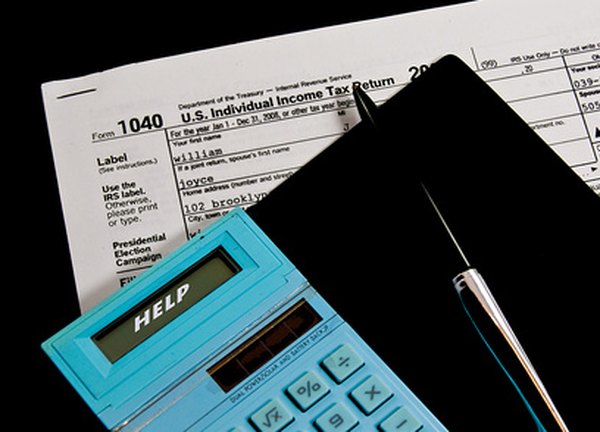When Filing Tax Returns, Where Do You Put Stocks and Bonds?
The long Form 1040 tax return is required if you sold stocks or bonds.
TAX TIME image by brelsbil from Fotolia.com
Your stock and bond investments pay dividends and interest that you need to report on your tax return. If you sell any of your investment holdings, the result will be a capital gain or loss, which also must be reported. To report your investment earnings, gains and losses requires a couple of extra forms attached to your tax return.
Reporting Requirements
If you earned less than $1,500 in interest and dividends for the year, the amounts can be entered directly onto your income tax return. Taxable interest goes on line 8a of both the 1040 and 1040A tax returns. Any tax-exempt interest earnings go on line 8b. Ordinary dividends -- your total amount of dividends -- go on line 9a and the qualified portion of the dividends on line 9b. Stock and bond values of your investments are reportable if you sold an investment and realized a gain or loss. If you do not sell, there is nothing to report.
Dividends and Interest
If you have dividend and interest earnings in excess of the $1,500 threshold, you must complete Schedule B, Interest and Ordinary Dividends form and attach the form to your 1040 or 1040A income tax return. List all of the stocks and bonds that paid dividends and interest and the amount received from each investment on Schedule B. The totals from the two parts of the form are transferred to lines 8a and 9a on your tax return.
Capital Gains and Losses
If you have gains or losses to report from the sale of your investments, you must complete two extra forms. Use Form 8949 to list the investments sold and the amount of profit or loss incurred on each. The form has separate sections for long-term investments -- owned for longer than one year -- and short-term holdings. The totals from Form 8949 go on Schedule D, Capital Gains and Losses. After working through the Schedule D, the final amount of gains or losses go on line 13 of Form 1040. You cannot file a 1040A if you have capital gains and losses from the sale of investments.
Forms 1099
The information you need to complete your tax return forms come from the different 1099s sent by your broker. Interest earnings are provided on Form 1099-INT, dividends from a 1099-DIV and the sales of stocks or bonds will be listed on a 1099-B. Your broker may combine the different types of 1099 into a single document. Transfer the information from your 1099 forms to the appropriate forms for your tax return.
References
Writer Bio
Tim Plaehn has been writing financial, investment and trading articles and blogs since 2007. His work has appeared online at Seeking Alpha, Marketwatch.com and various other websites. Plaehn has a bachelor's degree in mathematics from the U.S. Air Force Academy.

